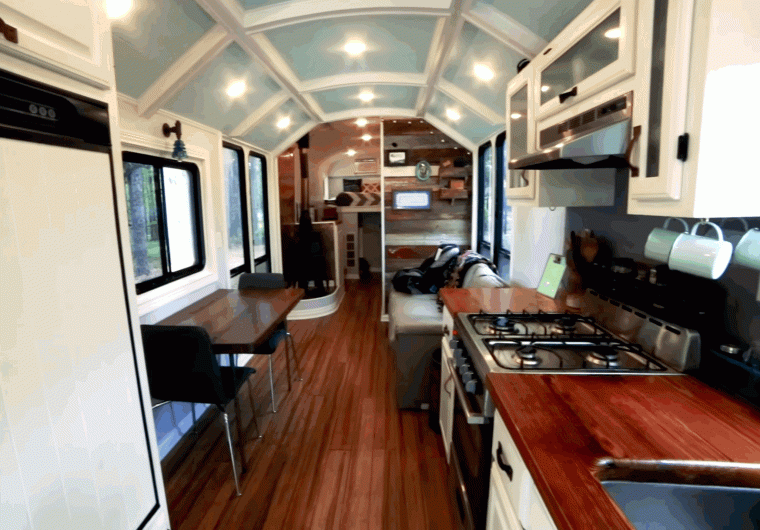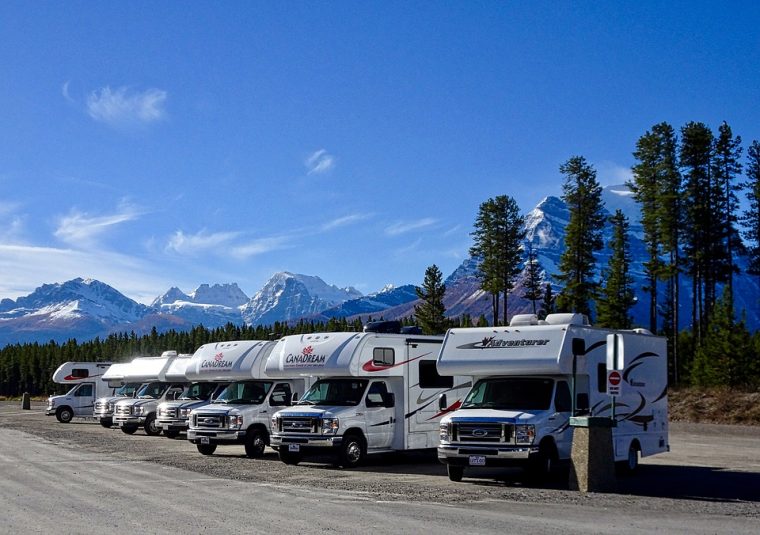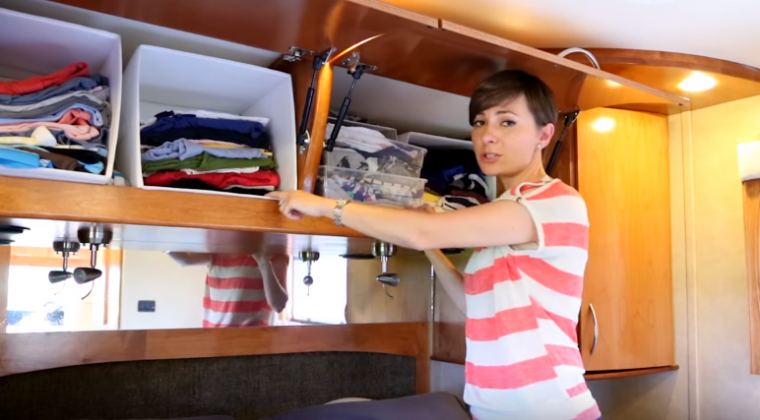How to Turn an RV into a Tiny House

More and more millennials are turning to RVs and tiny houses as an affordable alternative to house ownership. As Kevin Riedel from Richmond articulates, he wanted “to have [his] own house but wanted flexibility in terms of where it could be, and I wanted something that was more affordable than getting a standard mortgage.”
Jessica Brooder, author of a recently-published book Nomadland: Surviving America in the Twenty-First Century, explains how this trend might be a new norm in the U.S. as many people seek more frugal lifestyles to cope with the economical atmosphere of low wage jobs and wage stagnation: “For most of us, housing is the biggest expense we have. And it’s an expense that keeps going up even as wages stay flat. Once you leave a house behind, you know, you no longer have utilities. You don’t have maybe a lawn to keep up. You don’t have mortgage payments. You don’t have rent payments. […] Getting on the road is actually a kind of ingenious hack.”
Considering the surging popularity of this budget-savvy, mobile housing trend, many people are turning RVs into tiny houses all across the country. But exactly how do you do it? Here are a few basic guidelines to get you started.
DIY Maintenance: Upkeep for your RV

Decide on the type and size
RVs come in many styles: travel trailers, motorhomes, and truck campers. Research the unique benefits of each to determine which one will best suit your needs and preferences. Another factor you’ll have to consider is size. While it might be tempting to select a spacious RV, that usually implies you’ll be hauling around more belongings, which in turn, means more weight to haul around as well as storage space you’ll have to include in the renovations. Figure out exactly how much space you need (rather than want).
Buy your RV
Some people choose to purchase a used RV, however it’s a safer bet to get one from a local RV dealership. Inquire about older models, which will be the most cost-effective option. Whichever RV you decide to go with, inspect the exterior and interior thoroughly. Test the lights to make sure they work and examine the roof for any signs of water damage.
Make a blueprint
Before you start rejuvenating your RV, it’s wise to sketch out a design of what you want it to look like. This will help guide your renovation process. It’s also a good idea to include colors, furniture, lighting fixtures, etc. when drafting out the visual.

Emphasize storage
Since RVs are considerably more compact than a conventional house, make sure that your renovation design incorporates plenty of spaces to house your belongings. Browse the internet and explore Pinterest for inspiration. Items such as under bed storage and built-in shelving are smart ideas, as well as furniture that doubles as storage.
Minimize, then move in
Before you move into your RV, you’ll likely have an abundance of clothes, unused cooking items, and random objects that you’ll need to donate. Living out of a revamped RV will definitely force you to downsize. Once you’ve “cleaned house,” so to speak, take the essential possessions left and move them into your new home.
For more inspiration, check out the following real-life RV makeover story.
This is a collaborative article.
Buying vs. Renting:Discover which option is right for you
News Sources: The Washington Post, HD Adventuring, NPR

The News Wheel is a digital auto magazine providing readers with a fresh perspective on the latest car news. We’re located in the heart of America (Dayton, Ohio) and our goal is to deliver an entertaining and informative perspective on what’s trending in the automotive world. See more articles from The News Wheel.

